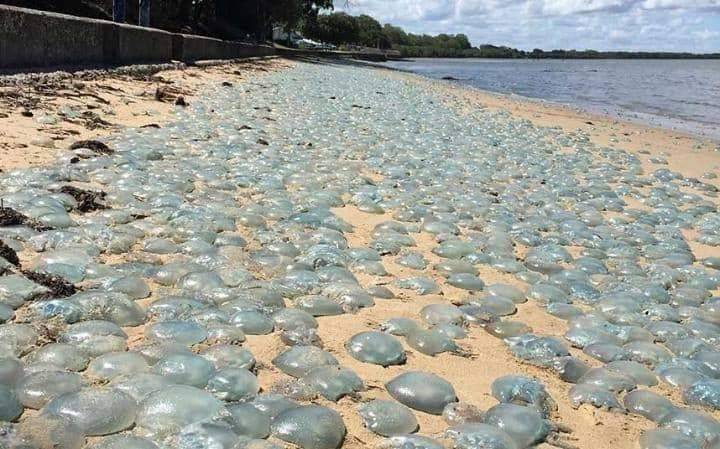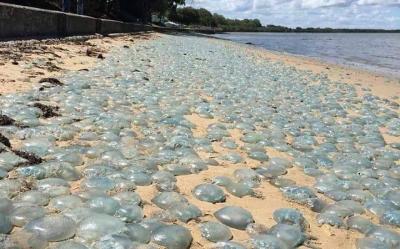In this season, sea swimming enthusiasts face the risk of jellyfish stings, and it is evident that their numbers have increased significantly in recent weeks. Those who find it hard to resist the urge to swim in the sea must prepare for possible stings. According to Santemagazine, jellyfish stings are not lethal, but they can be extremely painful. It is essential to be ready for the discomfort that can arise and to treat it correctly.
## Symptoms of a Jellyfish Sting
The types of jellyfish vary in their danger levels, leading to different symptoms from a jellyfish sting. However, generally, the symptoms may include:
- A burning sensation on the skin.
- Tingling and numbness at the site of the sting.
- Redness in the skin.
- Nausea and vomiting.
- Dizziness.
- Difficulty breathing.
In some cases, a sting from a highly dangerous jellyfish can lead to death.
## Treatment for a Jellyfish Sting
What should one do if stung by a jellyfish? There are steps to take quickly at the beach when exposed to a jellyfish sting:
- Get out of the water quickly, as the resulting pain can cause panic, which may lead to drowning.
- Carefully remove any remaining jellyfish tentacles from the skin using a thin tool like a knife or a piece of cardboard.
- You can apply a little sand to the affected area and gently rub it to remove what remains of the stings and the venom released by the jellyfish.
- Rinse the affected area well with seawater; it is better to avoid fresh water as it may increase the pain.
- Heat can be applied to the affected area using a hot object, as jellyfish venom can dissolve when exposed to heat.
- Vinegar can be used as one of the available remedies for jellyfish stings; it is often found on beaches for such cases. It contains acetic acid that helps eliminate any remnants of the stinging cells.
- Consult a doctor if stung on the face or if you experience an allergic reaction.
Upon returning home, additional steps can be taken:
- Sterilize the wound using a bandage soaked in disinfectant.
- If the reaction is mild, an antihistamine cream can be used to reduce discomfort from the sting. If the burning sensation continues 48 hours after exposure, consult a doctor who may prescribe a cream containing corticosteroids.
- Monitor the development of the sting area in the following days.
- Those who already suffer from allergies should be more cautious as they may experience a severe allergic reaction after repeated stings.
## What Not to Do When Stung by a Jellyfish
When exposed to a jellyfish sting, the affected person should avoid the following:
- Do not try to suck out the venom from the sting site.
- Do not apply alcohol to the affected area.
- Do not cut the site of the sting or make it bleed.
- Do not touch a dead jellyfish in the water, as the stinging cells can continue to cause harm.
- Do not apply a tourniquet or bandage to the sting site.




